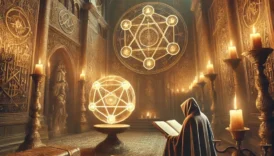Aytunç Altındal’s Insights on Marduk: A Fascinating Look into Babylonian Mythology

Renowned Turkish researcher and author Aytunç Altındal is celebrated for his in-depth explorations of religion, mythology, and history. In one of his intriguing analyses, Altındal sheds light on the enigmatic figure of Marduk, a Babylonian deity with a complex and ominous legacy. Below is an exploration of his statements about Marduk, the myths surrounding it, and its place in history.
- Aytunç Altındal’s Insights on Marduk: A Fascinating Look into Babylonian Mythology
- The Origins of Marduk: Tracing Its Roots
- Festivals and Prohibitions: The Legacy of Marduk
- Marduk as a Misunderstood Entity
- The 2012 Mayan Prophecy and Marduk
- 108-Year Cycles and the Influence of Esoteric Societies
- Who Was Aytunç Altındal?
The Origins of Marduk: Tracing Its Roots
According to Altındal, the name Marduk can be found in Hebrew texts and certain passages of the Bible. Marduk is one of the five major gods of Babylonian mythology, often portrayed as a deity with destructive tendencies toward humanity. Altındal suggests that readers can locate references to Marduk in the Bible’s 2 Kings (Chapter 39 and beyond).
In Babylonian lore, Marduk decides to annihilate humanity. However, a guiding figure named İŞU intervenes, urging Marduk to reconsider this decision. İŞU’s role underscores the moral dilemmas and narrative complexity within Babylonian myths. Altındal emphasizes that such stories reflect the belief systems of ancient Mesopotamia.
Festivals and Prohibitions: The Legacy of Marduk
Altındal discusses the Babylonian festivals held in honor of Marduk, particularly during the last five days of the year. These festivals were shrouded in apocalyptic themes and accompanied by strict prohibitions:
- Dietary restrictions: Consuming pork and fish was strictly forbidden during the festival. Violating these rules was believed to invoke Marduk’s wrath, potentially leading to destruction.
- Hygiene and dress codes: Men were required to wear the same clothing for the festival’s duration, while women were prohibited from bathing, symbolizing a deliberate departure from normal societal practices.
- Mandatory white attire: White garments were seen as a form of ritualistic compliance with Marduk’s decrees.
These practices were deeply tied to Babylonian beliefs about the end of the year being a time of judgment and renewal, marked by the god’s symbolic appearance.
Marduk as a Misunderstood Entity
Altındal criticizes modern interpretations that equate Marduk with a physical planet. He argues that this is a misrepresentation of Babylonian mythology, which describes Marduk as a deity rather than a celestial body. Stories of Marduk “returning to destroy the Earth” are rooted more in mythological allegory than historical or astronomical fact.
The 2012 Mayan Prophecy and Marduk
Altındal also delves into the infamous 2012 Mayan prophecy, which sparked widespread speculation about the end of the world. He explains that the Mayans did not predict an apocalyptic event but instead referred to a period of transformation—both physical and spiritual.
He interprets the prophecy as marking the end of one era and the beginning of another, where humanity undergoes both challenges and growth. Altındal emphasizes that these interpretations should not be taken as literal predictions of doom but rather as insights into the cyclical nature of human history.
108-Year Cycles and the Influence of Esoteric Societies
Altındal introduces an intriguing concept of 108-year cycles, derived from the teachings of esoteric groups such as the Rosicrucians (Gül ve Haç Kardeşliği). According to these teachings, significant changes occur in the world every 108 years, broken into three 36-year periods:
- 1989–2025: Known as the “Enigmatic Era,” this period is described as a time when humanity realizes the flaws in what it once accepted as truth.
- The next cycle: Starting in 2025, Altındal believes it will bring about further revelations and transformations, integrating lessons from the past.
These cycles are thought to influence not only societal trends but also natural phenomena, such as climate shifts and changes in human behavior.
Who Was Aytunç Altındal?
Aytunç Altındal (1945–2013) was a distinguished Turkish researcher, historian, and political scientist. He gained recognition for his thought-provoking investigations into religion, mysticism, and history. His books, including The Brotherhood of the Rose and the Cross (Gül ve Haç Kardeşliği) and The Hidden History of Turkey, remain valuable resources for those interested in esoteric and historical studies. Altındal’s work bridges ancient myths with modern interpretations, providing fresh perspectives on age-old questions.
Altındal’s insights on Marduk not only unravel the mysteries of Babylonian mythology but also challenge contemporary misconceptions about ancient beliefs. For those intrigued by the intersection of mythology, religion, and history, Aytunç Altındal’s work continues to be an invaluable guide.





